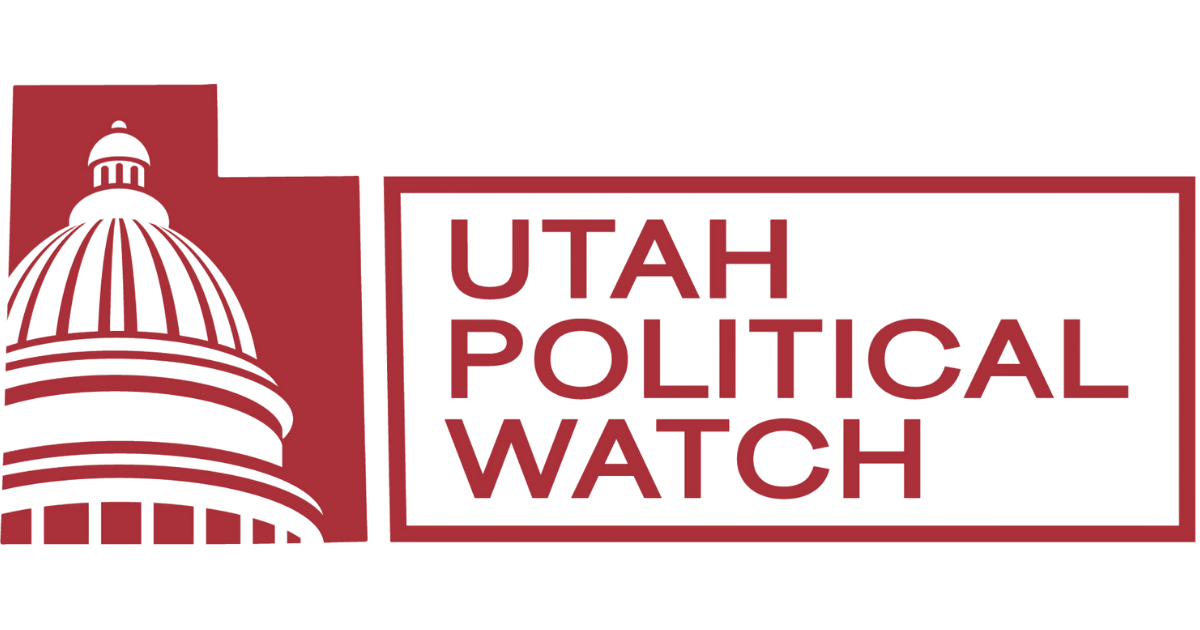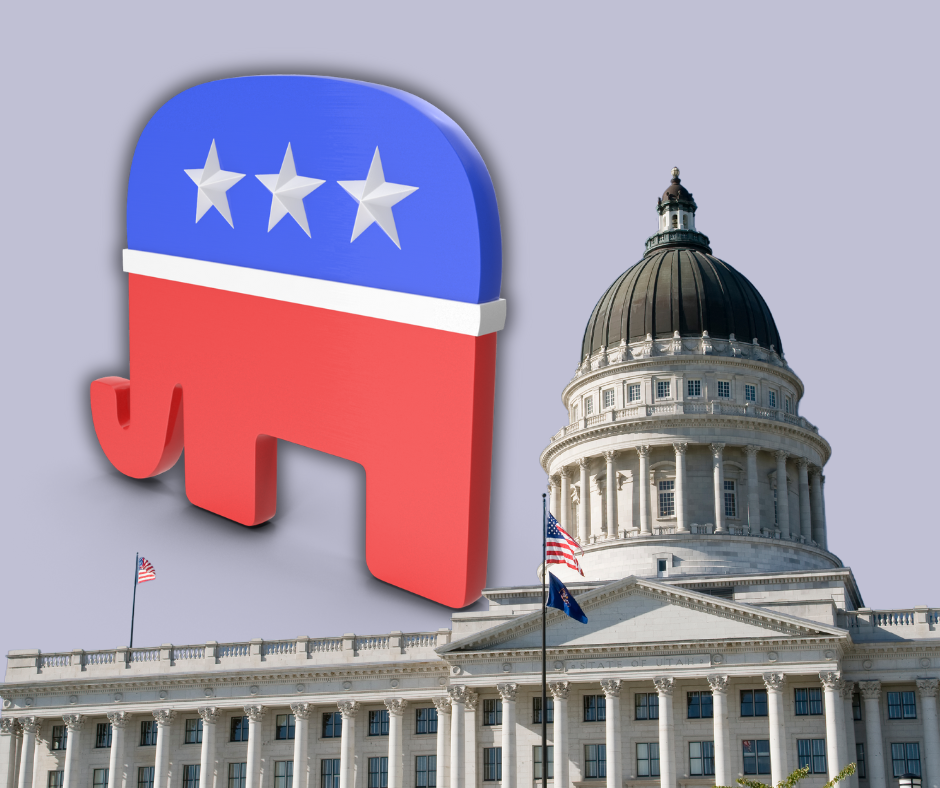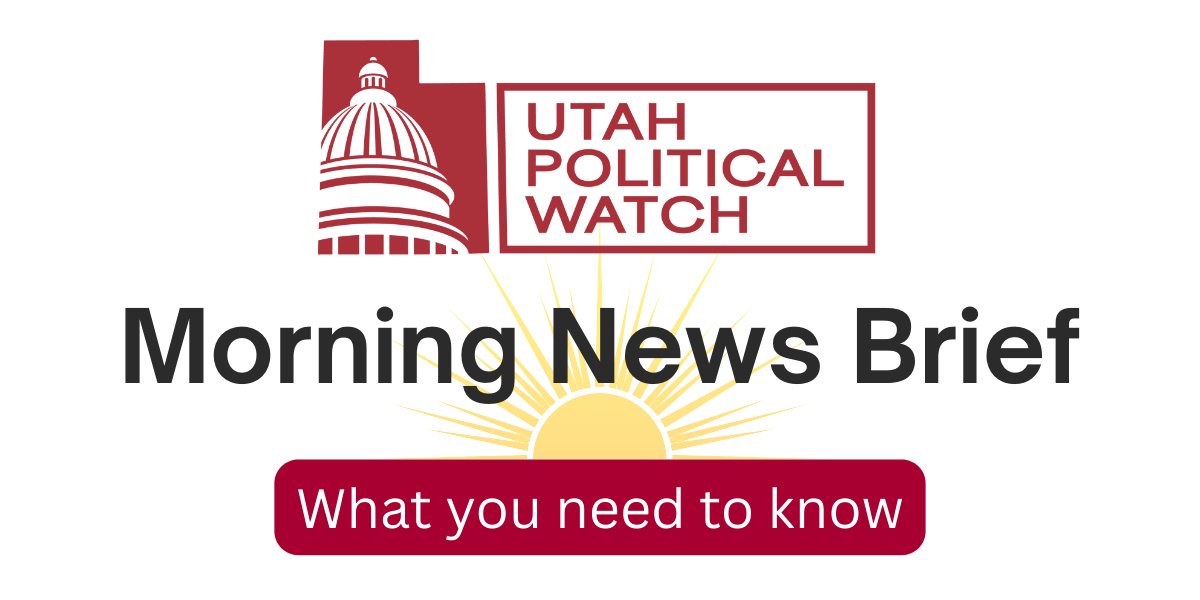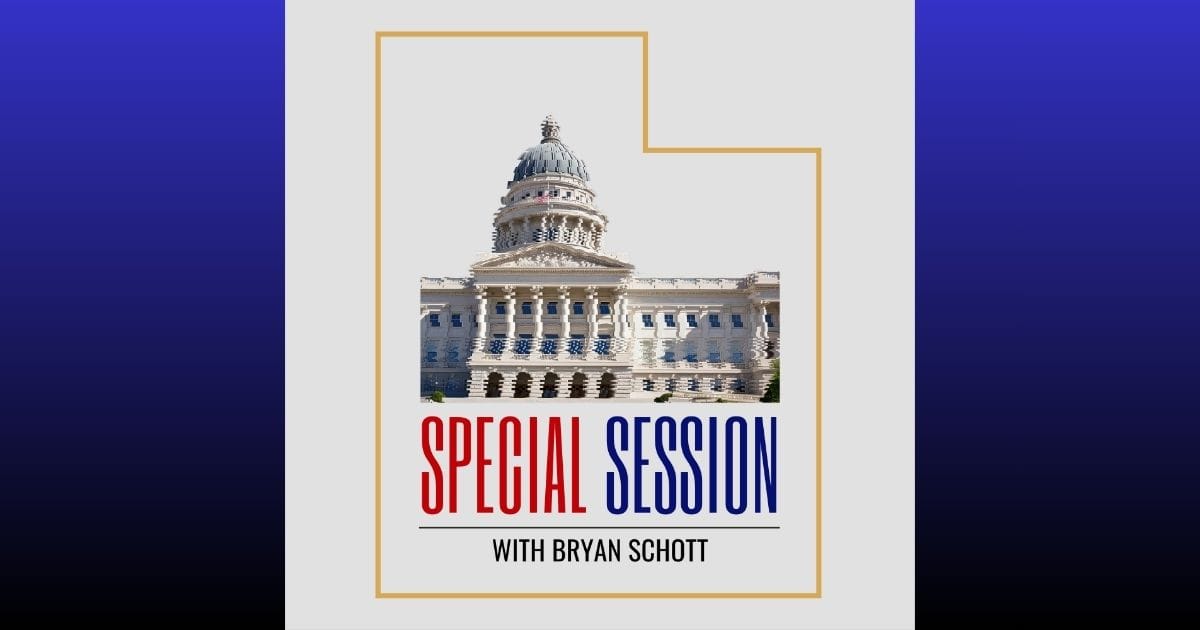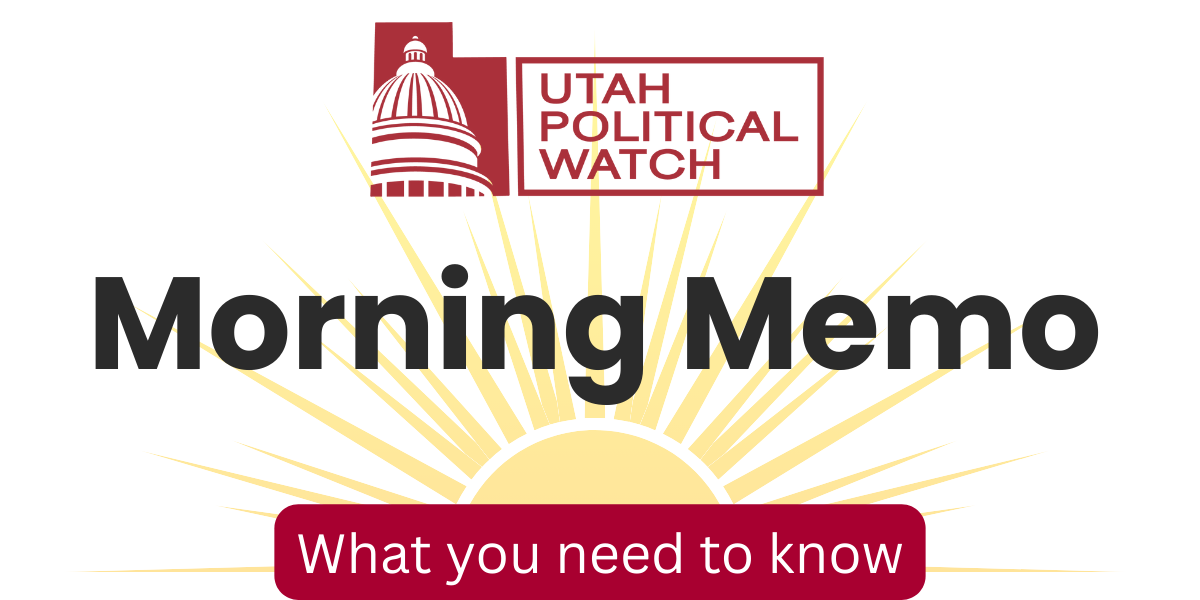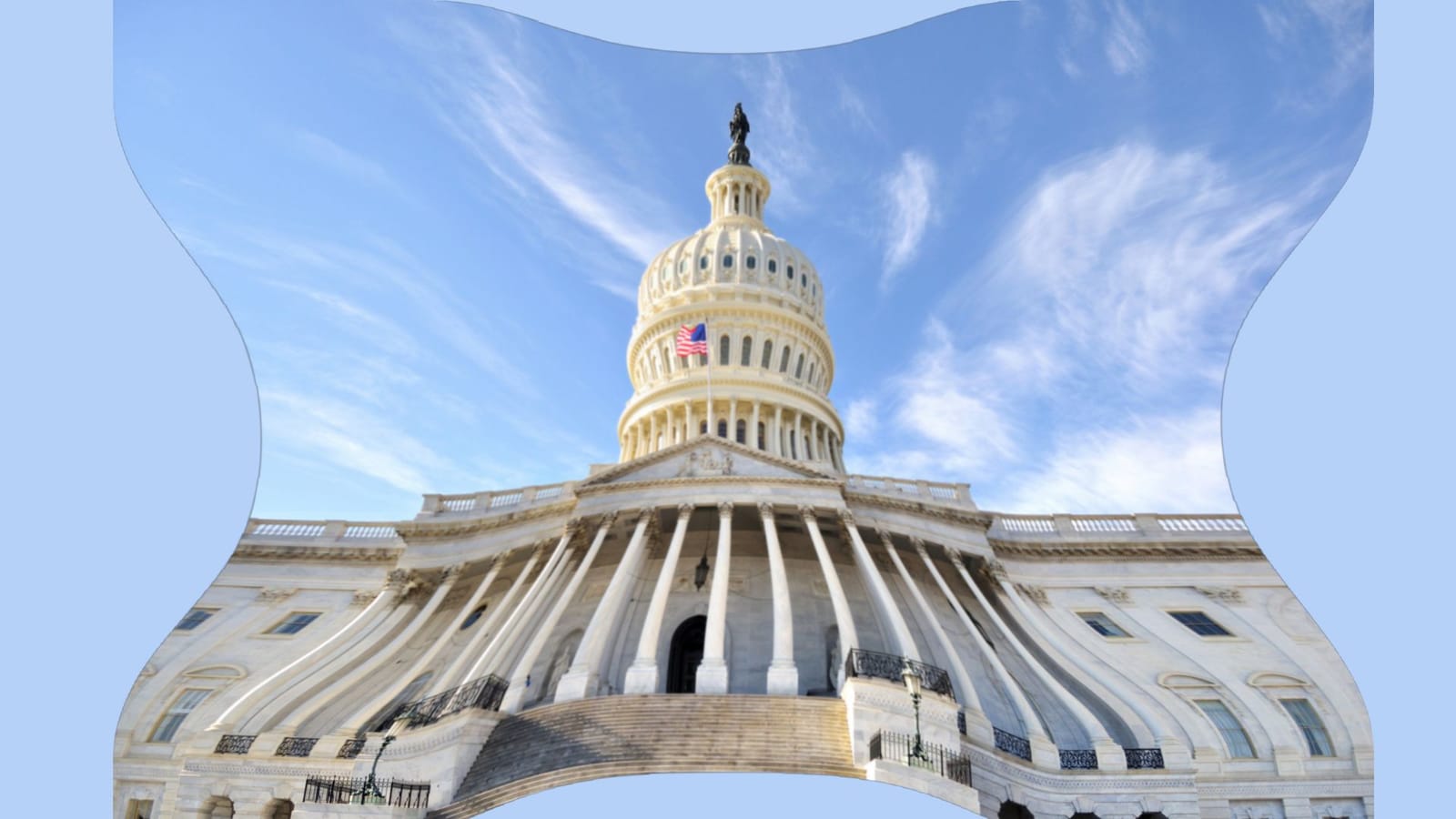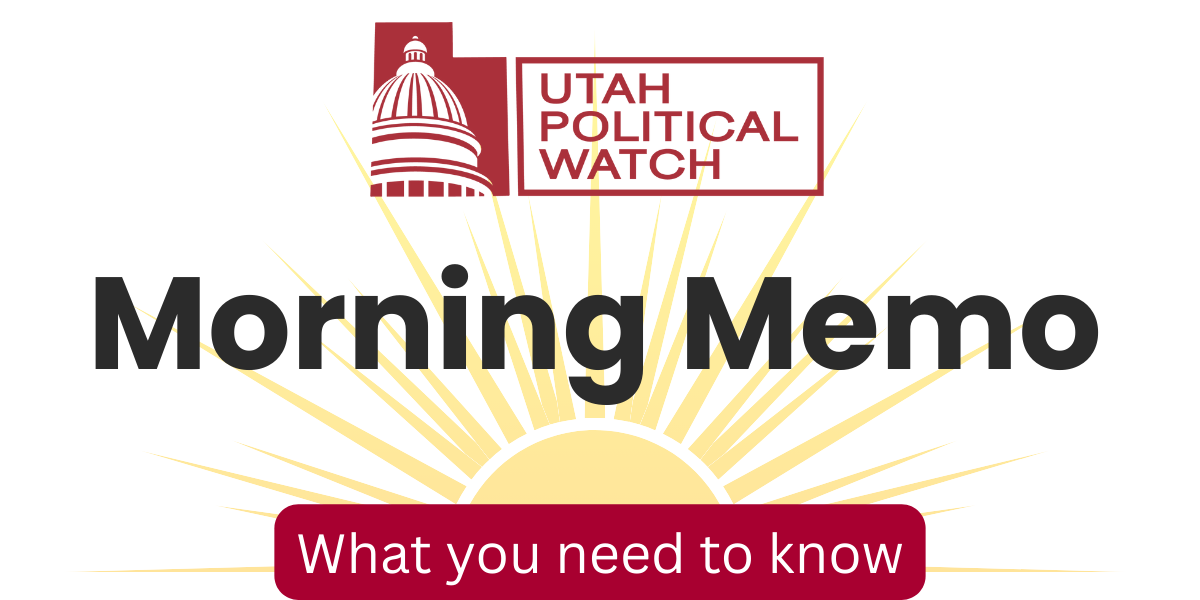Attacks on SB54 are commonplace at Republican conventions. Delegates hate the 2014 law created Utah’s dual-path nomination system, allowing candidates to either gather voter signatures, win delegate support at political party conventions, or both to reach the primary election ballot. Convention delegates, who traditionally controlled party nominations, particularly hate this law because it diminishes their power. However, three developments at Saturday’s Utah GOP convention suggested growing momentum for the Republican controlled Legislature to ditch SB54 — possibly later this year.
First, the sponsor of a proposal to kick signature gathering candidates out of the party yanked the initiative off the agenda, cryptically explaining that he had recently been made aware of another way to end the signature path that was under consideration.
Later that day, Sen. Mike Lee issued a clarion call to state leaders and GOP delegates alike to take swift action to scrap SB54.
“Mr. Governor, I ask you to convene a special session as soon as possible. Bring together the Legislature and ask them to restore the caucus and convention system,” Lee said. To drive his point home, Lee urged delegates to put pressure on lawmakers.
“Who’s with me? I call upon all within the sound of my voice. If you agree with me, please express it in any way you can to your state senators, to your state representatives, anyone else who will listen. Tell the government to stay out of our nomination process.”
Lee leading the charge on this issue seems hypocritical, since he collected signatures to secure a spot on the ballot during his last two re-election bids. In 2016, he paid a signature-gathering firm $128,000 to collect the required 28,000 signatures. In 2022, his campaign hired the the same firm for more than $400,000.
It would be easy to dismiss Lee’s comments as just red meat to rile up GOP delegates. But shortly after he was elected to another term as Utah GOP Chairman, Rob Axson joined the chorus of people calling for the end of signature gathering.
“I’d like them (the Legislature) to repeal that (SB54),” Axson said when speaking to the media, adding that he believes they are already halfway there.
“The votes are there in the House. The votes are not there yet in the Senate,” Axson said. “It’s going to take some time. How long or short that is, I don’t know. But what I do know is we have in our ability the opportunity to build a strong party, and that there will be a benefit in repealing SB54.”
As author Ian Fleming wrote in Goldfinger, "Once is happenstance. Twice is coincidence. Three times is enemy action." These three developments suggest Republican lawmakers may be preparing to eliminate the signature gathering path — and here's how they could do it.
The timing for such a move would be critical. Any attempt to repeal SB54 or alter the signature gathering process would need to happen before Jan. 2, 2026 - the first day candidates can file to run for office next year.
It would be very attractive for the GOP legislative supermajority to attempt a repeal of SB54 outside the regular legislative schedule because it would severely limit the amount of time for opponents to mobilize.
When lawmakers decide to fast track a bill through the regular legislative process, it can take several days or even a few weeks. That same process is reduced to a couple of days in a special session.
That’s what happened last year when lawmakers used an emergency session in August to place a proposed constitutional amendment on the ballot to give themselves the authority to veto voter approved ballot initiatives. The whole process took a little more than 48 hours.
- Legislative leaders issued the proclamation to convene the emergency session on August 19.
- The language of the proposed bill, SJR401, was released to the public on August 20.
- The bill had one public hearing on August 21 in the Business and Labor Interim Committee. Later that afternoon, it breezed through the House and Senate in a little more than two hours.
If the legislature chooses to go down this path, the only thing that could stop them would be any bill to change or eliminate signatures failing to pass with a 2/3 majority in both the Utah House and Senate. Not only would that make the legislation veto proof, it would also be referendum proof.
Legislative leaders have likely learned their lesson from the referendum effort to put HB267, the union-busting bill they passed earlier this year, on the ballot. It failed to cross the 2/3 threshold in both the House and Senate, which was the only thing that made the effort to overturn the law at the ballot box possible. Opponents mobilized to collect hundreds of thousands of signatures, and Lt. Gov. Deidre Henderson put the law on hold pending an official determination that it has qualified for the 2026 ballot.
Recent polling shows a plurality of Utahns (44%) prefer the current dual-path system, while only 12% want candidates to be nominated exclusively by delegates at political conventions.
It’s highly unlikely legislative leaders would bring this kind of legislation to the floor unless they’re sure they have enough votes to avoid a referendum. The 22-seat Republican majority in the Senate could only afford to lose two votes and still be above the referendum-proof threshold. The margin is more comfortable in the House, where leaders could lose 11 of the 61 GOP votes in that chamber and still have 2/3 support.
Should lawmakers muscle through a repeal of SB54 with enough votes to prevent a referendum effort this year, the impact would be immediate and far-reaching. Starting with the 2026 election cycle, party delegates would regain their role as gatekeepers to the ballot.
According to voter registration figures from election data firm L2 Data, there are just over 855,000 active Republican voters in the state. The 2,650 GOP delegates who showed up for Saturday’s convention represented just 0.3% of all the active Republican voters in Utah.
It doesn’t take much imagination to think that a number of Republican elected officials would not be in office today if not for SB54.
Sen. John Curtis’s political career likely would have ended in 2017 when he ran in the special election following Rep. Jason Chaffetz’s surprise resignation from Congress. Curtis was eliminated by delegates at the convention, but advanced to the primary by collecting signatures.
Curtis’s decision to gather signatures paid off again in 2024 when Trent Staggs was the overwhelming winner of the delegate vote for U.S. Senate at the GOP convention. He won the primary and went on to an easy win in November’s election.
Without signatures, Gov. Spencer Cox would be back on his farm in Fairview instead of the governor’s mansion after he was trounced in the delegate vote by Phil Lyman last year.
Moving away from signatures and returning to a convention-only nominating process would be particularly attractive to Republican legislators in safe districts. For them, winning over a few dozen delegates would be far easier than facing thousands of primary voters.
For example, Rep. Ken Ivory was forced into his first-ever primary election in 2024 when his opponent gathered signatures. Without SB54, the 38 votes he secured at the GOP convention would have been enough to win the nomination outright.
SB54 was the result of a 2014 compromise between the GOP-controlled Legislature and organizers of a ballot initiative to do away with the convention role in nominating candidates for good. At the time, public polling showed that if the measure qualified for the ballot, it likely would have passed. Recognizing the existential danger facing Utah’s caucus/convention system, lawmakers agreed to create the alternate signature path to the ballot in exchange for abandoning the initiative effort.
Repealing SB54 would break that deal, and likely lead to a renewed effort to put the measure to kill party nominating conventions on the ballot. However, organizers would be left scrambling.
To qualify an initiative for the 2026 ballot, organizers would have until Feb. 15 to collect signatures from 8% of registered voters in Utah - just over 140,000 statewide. They also must reach that 8% threshold in 26 of 29 state Senate Districts.
In addition to the signature requirement, lawmakers have added several new hurdles to the initiative process. While paid petition circulators can be paid for each valid signature they collect when they’re working for a candidate, they can only be paid hourly when working on a ballot initiative.
Sponsors must also hold at least seven public hearings about the initiative across the state before collecting signatures. Each hearing must be at least one hour long and include an hour for public comment.
During the 2025 session, lawmakers added a new requirement that sponsors include a detailed breakdown of how the new law would be funded and whether it required a tax increase. Sponsors are also required to publish the proposed law in newspapers around the state for at least 60 days before the election, which could cost more than $1 million.
Were a potential ballot initiative aiming to undo the repeal of SB54 to qualify for the 2026 ballot and pass, it would be in effect for the 2028 election. If the effort to put the issue on the 2026 ballot fell short, organizers would be blocked from trying again for two years.
Realistically, repealing SB54 would freeze signature gathering candidates out of the GOP through 2028 at least. That means GOP delegates would decide the party’s nominee for governor. Instead of a Spencer Cox-type signature candidate, delegates would likely pick a conservative hardliner to head up the GOP ticket. That would be a massive advantage for the eventual nominee since it’s been more than 30 years since a Democrat won a statewide election in Utah.
Previous attempts to repeal SB54 have fallen short.
In 2023, Rep. Jordan Teuscher offered up HB393, which proposed canceling a primary election if a candidate received 70% of the vote at convention, kicking signature gathering candidates off the ballot. That bill passed the House, but stalled in the Senate.
In 2021, Sen. Dan McCay’s SB205, sought to allow political parties to nominate candidates exclusively through the convention path so long as they raised the threshold for winning the nomination outright to 66%. The bill died on the Senate floor, but he was able to rally enough support to resurrect the proposal. Eventually, it died without further action.
But this time feels different. With coordinated messaging from party leadership, a potential special session strategy, and a legislative supermajority that could block referendum efforts, SB54's opponents may have finally found their moment. The question isn't just whether they'll succeed, but whether Utah voters will have any recourse if they do.
